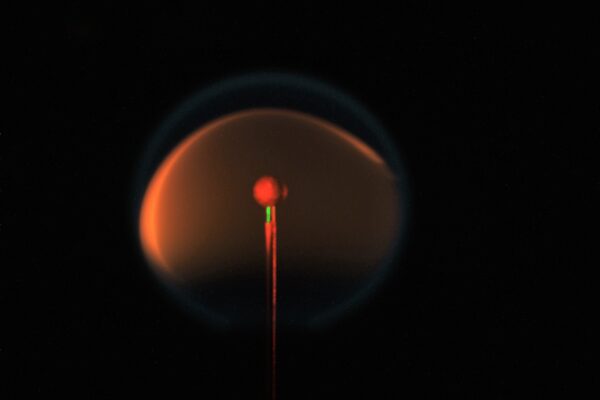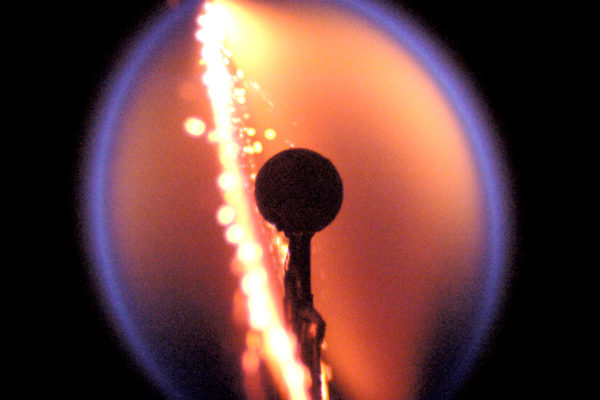Flame design in space may lead to soot-free fire
Astronauts currently aboard the International Space Station have begun an experiment that will allow them to ignite a flame and observe and study its properties. If the experiments — directed by a McKelvey School of Engineering faculty member — show what researchers expect they will, they could lead to a new, fundamental understanding of the properties of combustion.
Engineers launch experiment into space
An experiment designed by an engineering team at Washington University in St. Louis soon will be performed in space. The experiment, called Flame Design, was on board a SpaceX Dragon rocket that launched into orbit June 3.
50-year-old hypothesis validated as experiments show how liquid metals resist turning solid
A levitated droplet during heating by a laser to just above the melting temperature.Using the Electrostatic Levitator at NASA’s Marshall Space Flight Center, a physicist at Washington University in St. Louis led a research team that validated a 50-year-old hypothesis explaining how liquid metals resist turning into solids. The research, led by Ken Kelton, Ph.D., a professor of physics in Arts & Sciences at Washington University, is featured in the July 2003 issue of Physics Today, including an image on the magazine’s cover of a solid drop of metal suspended inside the levitator. The NASA-funded research challenges theories about how crystals form by a process called nucleation, important in everything from materials to biological systems.”Nucleation is everywhere,” says Kelton. “It’s the major way physical systems change from one phase to another. The better we understand it, the better we can tailor the properties of materials to meet specific needs.”
50-year-old hypothesis validated as experiments show how liquid metals resist turning solid
Using the Electrostatic Levitator at NASA’s Marshall Space Flight Center, a physicist at Washington University in St. Louis led a research team that validated a 50-year-old hypothesis explaining how liquid metals resist turning into solids. The research, led by Ken Kelton, Ph.D., a professor of physics in Arts & Sciences at Washington University, is featured in the July 2003 issue of Physics Today and includes an image on the magazine’s cover of a solid drop of metal suspended inside the levitator. The NASA-funded research challenges theories about how crystals form by a process called nucleation, important in everything from materials to biological systems.


